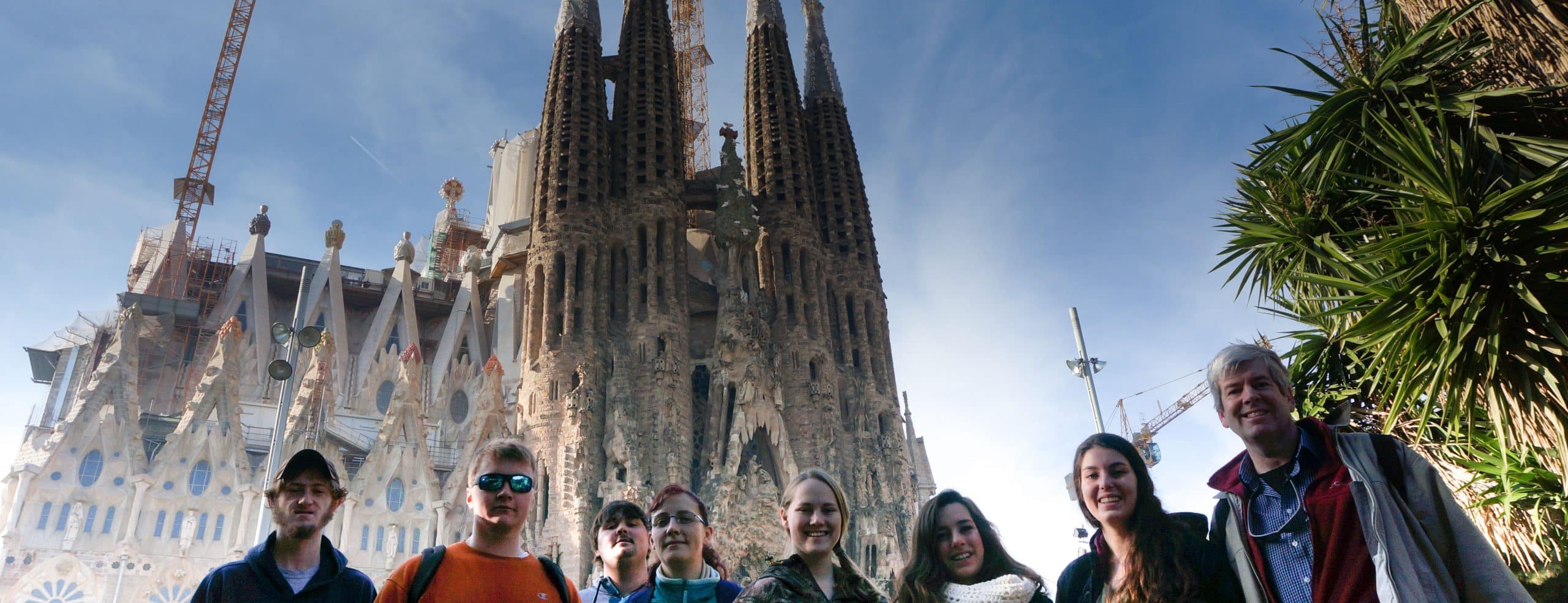At Vermont Tech, education is all about practical learning through real-world experiences. Over the holiday break, six Vermont Tech students and one student from Lyndon, took part in the experience of a lifetime. In Barcelona, Spain they explored architecture and culture, ate new kinds of food, and even learned some Spanish. It was all for a Vermont Tech course called “Architectural Study Abroad.”
In this class, students spend the semester studying world architecture through the use of lectures and seminars. Two versions of this class are offered; a 1-credit, travel-intensive course and the 4-credit option that includes both the architectural history lectures and travel. The course involves an in-class forum that provides an opportunity for the student to join in follow-up discussions of lectures. The students are introduced to architectural design philosophies and construction systems that have developed over the centuries. Influences such as social, political, religious, economic, and technological advances are traced from the first significant works of humans 5,000 years ago through the present day. The 4-credit class also concentrated on western development since the 18th century, particularly in North America, and the significance it has on today’s society.
 Students completed this course with a new appreciation for, and recognition of, different architectural styles and principles. In other years, the ancient architecture of England, Scotland, and France has been the focus of study. Architecture in Barcelona is awe-inspiring. The most famous tourist attraction is the Sagrada Familia (pictured in header) which was constructed by the influential and groundbreaking architect, Antoni Gaudi. More of Gaudi’s famous buildings were also toured including the Casa Mila, Casa Batllo (seen left decorated for the holidays), and the beautiful Park Guell. Gaudi is one of the best known practitioners of a style of architecture called Catalan Modernism. His works are always unique and distinctive. While many architects gather their inspiration from geometrical shapes, Gaudi’s style reflects his passion for nature and religion.
Students completed this course with a new appreciation for, and recognition of, different architectural styles and principles. In other years, the ancient architecture of England, Scotland, and France has been the focus of study. Architecture in Barcelona is awe-inspiring. The most famous tourist attraction is the Sagrada Familia (pictured in header) which was constructed by the influential and groundbreaking architect, Antoni Gaudi. More of Gaudi’s famous buildings were also toured including the Casa Mila, Casa Batllo (seen left decorated for the holidays), and the beautiful Park Guell. Gaudi is one of the best known practitioners of a style of architecture called Catalan Modernism. His works are always unique and distinctive. While many architects gather their inspiration from geometrical shapes, Gaudi’s style reflects his passion for nature and religion.
The class also saw more modern architecture such as Mies van der Rohe’s Barcelona Pavilion which was originally constructed in the early 20th century and rebuilt in 1986. While they were building their knowledge, the seven students and their instructor, Brad Miller, rang in the New Year at the Placa Espanya where they took part in the Spanish tradition of eating 12 grapes during the final 12 seconds of the Old Year.
Professor Miller said, “From seeing the fantastical architecture of Antoni Gaudi to celebrating New Year’s Eve at the Placa de Espanya (Barcelona’s Time Square), we learned a great deal about Barcelona, Spain and its culture.”
